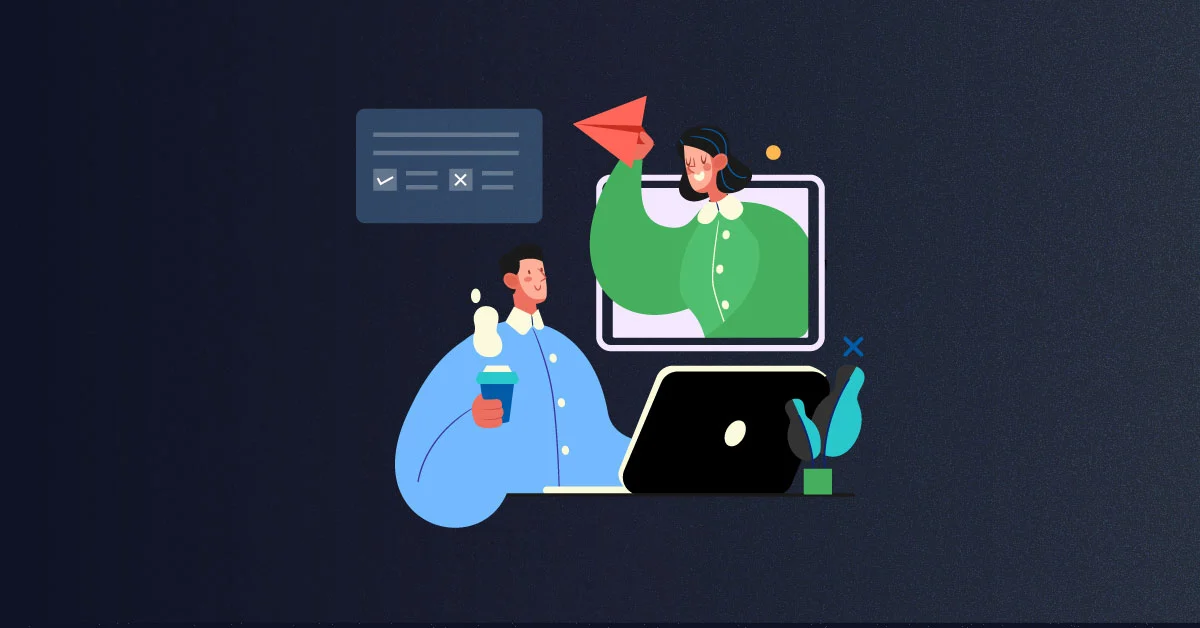In this Learning and Development podcast episode, Nolan Hout, Senior Vice President at Infopro Learning, interviews Matt Mason, Senior Vice President of Learning Enablement and Technology Director at Truist. The discussion revolves around the missing part of learning and development, a crucial element that significantly impacts organizations. Matt shares insights into his career journey, which started as a molecular geneticist and eventually led him to the corporate world. He recounts transitioning from teaching to instructional design and gradually moving up the ladder in various industries, such as retail, telecom, aerospace, and financial services.
The conversation then delves into the importance of experience and continuous learning for effective leadership. Matt emphasizes the need for leaders to stay curious, be willing to learn new things and understand the nuances of different industries while maintaining a common focus on learning and development.
Listen to the Podcast to learn more:
Question:
When you look at capacity planning, how do you do that as a centralized function?
Question:
What kind of good takeaway might you want to leave us with?
Expert profile:

Matt Mason
Matt Mason is an accomplished learning and development executive with extensive leadership experience spanning over 27 years. He has held leadership positions at renowned Fortune 100 companies across diverse retail, banking, telecommunications, aerospace, defense, and higher education industries. Matt is widely recognized for his proficiency as a learning and development leader, firmly believing that learning and development is an ongoing expedition. He perceives a company’s learning culture as crucial to its leadership qualities. Matt engages in consultancy and collaborates directly with senior executives and leaders, striving to comprehend their business strategies. He then formulates robust learning solutions and strategies to enhance their overall business performance.

Nolan Hout:
Nolan Hout is the Senior Vice President at Infopro Learning. He has over a decade of experience in the L&D industry, helping global organizations unlock the potential of their workforce. Nolan is results-driven, investing most of his time in finding ways to identify and improve the performance of learning programs through the lens of return on investment. He is passionate about networking with people in the learning and training community. He is also an avid outdoorsman and fly fisherman, spending most of his free time on rivers across the Pacific Northwest.
An excerpt of the discussion follows:
Nolan:
Hello everyone. Welcome to the Learning and Development podcast, sponsored by Infopro Learning.
As always, I’m your host, Nolan Hout, and today we’ll be talking with a very special guest, the Senior Vice President of Learning Enablement and Technology Director at Truist, Matt Mason.
Today, we will be talking about a topic that is incredibly fascinating to me. Well, it isn’t always considered the alluring topic in our field. It certainly should be! Because the impact it has on an entire organization cannot be overstated. It’s the missing part of Learning and Development. I’m not going to tell you exactly what that thing is quite yet, but I will get you a little closer to the answer by ending this introduction and getting to our phenomenal guest today, Matt Mason.
Hello, Matt. Welcome to the podcast.
Matt:
Hey Nolan, thanks for inviting me. Great to be here.
Nolan:
Well, we have a full agenda today that I want to get to, and I know many of our listeners want to get to it as well, which is understanding the missing part of learning and development.
I’m going to start, Matt, by talking about probably the favorite part of many people in this podcast, and that’s learning about how the professionals that we talked to get to where they are today, obviously, somebody like yourself who has had a very successful career, you’re the Senior Vice President of Learning Enablement and Technology Director of Truist. Obviously, that’s not the first role you took out of college, and you probably had a winding road to where you got there, or maybe you had a ladder, and you just stayed on every rung and went up that way.
Would you mind giving us a bit of an introduction to yourself and maybe where you started and how you ended up to where you are today?
Matt:
Absolutely! And again, thank you for the invite.
See, you mentioned a fun career that I’ve had, and as I sit here at my desk and look around the things on my desk, something my father gave me when I started my career many years ago, and it’s a little sign that says never give up, and that’s its part of who I am. It comes from a great line of hard work, family members and parents. But setting the stage here is what I think about my career, purpose, and statements that have been for some time and are still empowering teams. Delivering solid business results through teamwork and empathetic leadership has served me as a leader and in a couple of areas as an executive in learning development. My favorite part of this is the people.
I love molding and growing, so naturally, I’ve migrated to different parts of learning to do some learning technology. I’ve had the privilege of doing some cool stuff. With handheld devices in the aisle at retail and on the floor of other organizations’ strategic partners to the business, I sit and listen to calls, I listen to the analyst’s comments, I read the reports on my development; I am a big believer in career development and professional development and then leadership development as well.
I’ve had the opportunity to build some models and some high-level executive programs and enjoyed that just from a background tactical perspective. Not widely known, I began my career as a classical molecular geneticist. This background allows me to understand why my kids have certain traits. The fascinating aspect of my journey includes receiving a Howard Hughes Medical Fellowship and learning from exceptional professors. This experience has emphasized the significance of context and taught me valuable lessons about research and measurement tools.
I learned how to simplify the complex, which helped me get into teaching at the college level as a professor, instructor, and teacher in both higher education and secondary school. I learned how to communicate well, build curriculums, and navigate politics. It was the first time I saw what politics and work look like, which moved me to the corporate world in the early 2000s. Thankful that Lowe’s Companies, Inc retail picked me up, and I had an opportunity to start as an instructional designer and facilitator and work my way up along the way; I ran training at the corporate level and supply chain level and left there as the corporate leading learning strategy, learning technology and learning operations.
Nolan:
How did you even know this word instructional design existed to get into it to apply to that?
Matt:
I think another part of my career is just to be at the right place at the right time. My transition from teaching to corporate was through a student who got in trouble driving too fast on the interstate and asked me to write a character letter of reference, and I did. The judge used that to decide his sentence and again got him off of a reduced sentence, and his father happened to be important.
So, when it was time to make the transition, a great family and friends helped me. But it was during a time when teachers could make the transition. Instructional design was becoming a degree program, and I had to learn how to transition from the curriculum development king of my classroom to the corporate world.
Nolan:
Very good, very good. So now we’re at Lowe’s, we’ve done. It sounds like we’ve worn so many different hats.
What’s the next chapter of that story?
Matt:
I learned telecommunications at Charter Communications, specifically the Spectrum Enterprise side. My first shot at sales ran the curriculum development side, and I had an operations team. I had the strategic part, the measurement side, and the operations element, and we also built content. And it was a fantastic job; it works for many great folks in that space and teaches much more about product development and telecommunications. I had an opportunity to go to Northrop Grumman Aerospace and Defense company and lead the talent development group as we stood up a new leadership development strategy with all the perks and all the trimmings of cohort programs and content and systems and got to learn how to pull all that together in a very successful way. Truist Financial called me and lured me back to some of the roots enjoyed in the space I’m in now, which are learning enablement and technology.
I currently support the backend of the learning department, now merged with talents and the technology stack that goes along with it. So, I get to support and be a servant leader on the enablement side, but on the technology side, really to get into the wheels and get a little nerdy. But supporting in our case, the teammate learning experience enables key technology.
Nolan:
We consult and partner with clients all the time, and one of the big questions we get for people not working with us is, what background do you have in our industry? It’s always an interesting dynamic of how much experience you should have in an industry. But your retail is like core retail, and then telecom is a different ball game, aerospace, a completely different ball game, and Truist Financial Services.
How important do you feel the experience was for you? Were you always searching for that different thing, or was there a common thread that you’re like, as long as it’s got a common thread, I’m fine. I’ll figure it out.
Matt:
Great question. The common thread has always been learning and development in my professional career. My wife jokes that I always pick a new hobby to learn something new. I’m always tearing something apart to figure out how it works. So, for me, one of the key attributes of a great leader. Right now, learning and development is somebody that is fast and speeds up the market in terms of learning in that industry, not being afraid of asking how something works and being very vulnerable to admit they don’t know. For example, I’m a senior executive here in Truist space, and I’m taking a class on banking one-on-one because I want to learn the class of banking. I understand deposits, and I understand investments. But one has to humble themselves and go back and say, look, I want to learn this because eventually, I’ll get to the higher level or detailed stuff. However, the consistent thread there is also learning and development that differs from industry to industry. It’s the culture.
Matt and Nolan delved further into the realm of Learning and Development, exploring topics such as L&D centralization, tactics for budget approval, the qualities of an effective L&D team, and many other intriguing subjects. Be sure to tune in to the podcast for valuable and eye-opening perspectives.
Here are some interesting questions that arose during the discussion:
- What is that missing part in your mind of learning and development? Can you take us through that and what you found because you’ve now been in this space for a while, and you found an area where I think there’s explain that to us?
- Is this, have you felt, like something Truist is doing, or is it completely carved out and separate, or did somebody at Truist like was a godfather or godmother of this program? How did this kind of role, or did you say this is what it should be?
- How do you deal with the challenge of getting project management funded when facing significant budget pressures, especially in June 2023, where many individuals struggle to get their companies to approve it despite recognizing its importance? What advice can you offer to those encountering this situation?
- What does your team look like? What types of people are on your team? Can you tell me about the types of people and roles they provide?
- When you look at capacity planning, how do you do that as a centralized function?
- What have you seen work the absolute best if you want to get your budget approved? What are those tips?
- Do you see a model like that working like where you are? Does it only work if you have a centralized L&D team? Or do you also feel like that model can work when L&D is decentralized, but then they have a centralized OPS to support? What are your thoughts on that?
- What kind of good takeaway might you want to leave us with?



